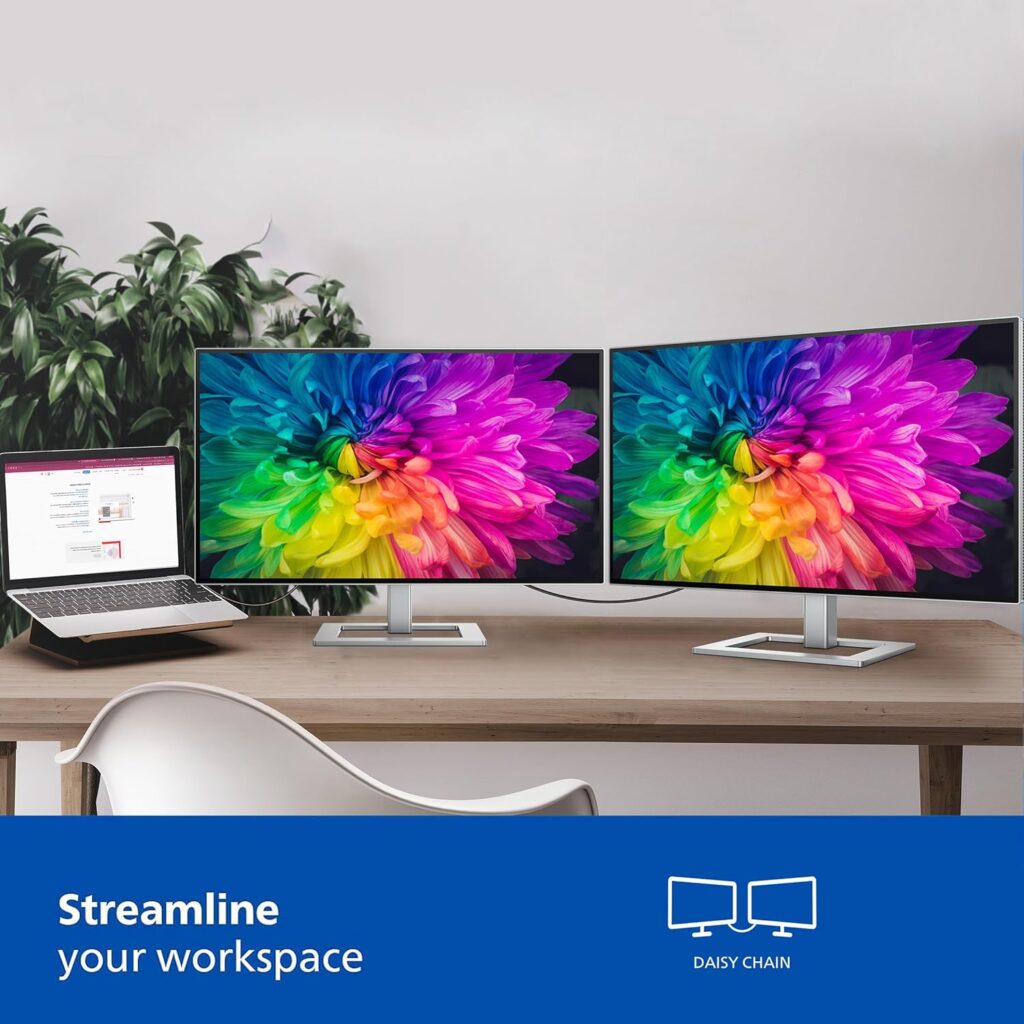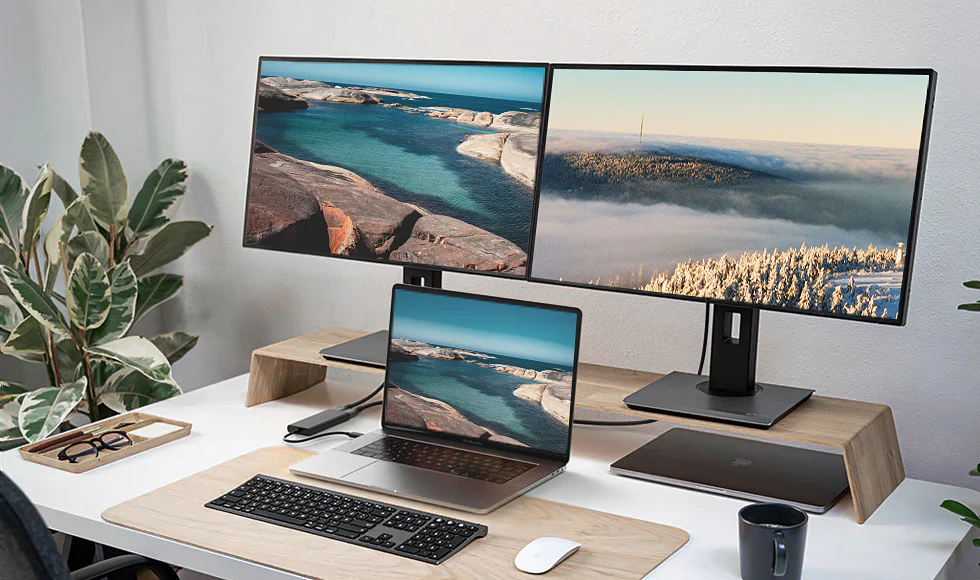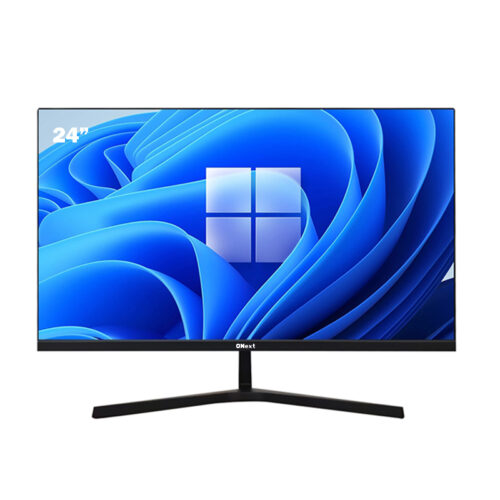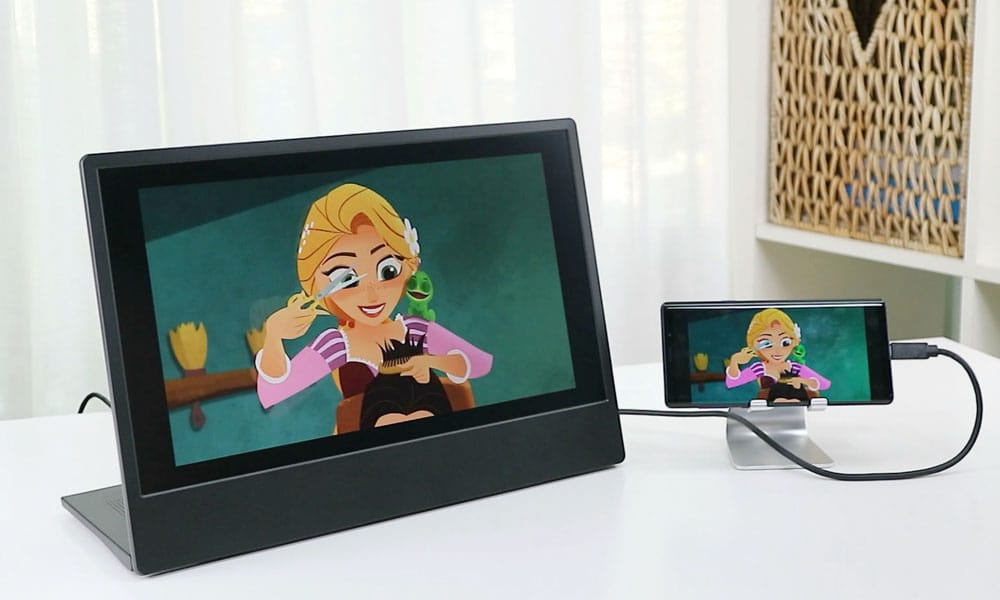Imagine you’re working on your laptop, switching between countless tabs, squinting at cramped windows, and thinking, There has to be a better way to get this done! Well, there is—a bigger, better, and smarter screen: an external monitor. Whether you’re juggling work projects, gaming, or binging your favorite shows, an extra screen can transform your setup and boost your efficiency (or fun) by leaps and bounds.
Table of contents
External Monitor : What Are They?
1. More Room to Work and Play
Multitasking is like juggling flaming swords, but it’s doable with a second screen. Whether comparing spreadsheets, editing videos, or gaming while streaming, this extra display gives a massive boost to your workspace.
- For Professionals: Think of editing photos and having all your tools open on the same screen; no more endless minimizing and maximizing.
- For Gamers: Keep the game on one screen and your team chat or walkthrough on the other. Pure gold for any boss battle or leaderboard climb.
2. Reduce Eye Strain
Let’s be real: squinting at a tiny laptop screen is a drain on both your patience and your poor eyes. External monitors come in larger sizes, complete with eye-friendly features like low blue light settings, saving you from those end-of-day headaches.
3. Better Posture, Fewer Aches
Hunching over like you’ve lost your keys on the floor isn’t doing you any favors. An external monitor, placed at eye level, can help improve your posture and lessen neck and back pain.
4. A Better Viewing Experience
Want to stream the latest blockbuster or dive into YouTube tutorials? High-definition external monitors let you enjoy sharper images, vibrant colors, and smoother video playback compared to many built-in laptop screens.

How Do They Work?
Setting up an external monitor is easier than making instant coffee. In most cases, all you need is one cable—a single connection like HDMI, USB-C, or DisplayPort—between the monitor and your device.
When you connect, your system automatically detects the monitor. You can decide how you will use it—whether as a mirrored display or as an extended workspace.
Some even go further and support wireless connections, so you can eliminate clutter altogether.
What to Consider When Choosing an External Monitor
1. Resolution and Screen Size
- Want stunning visuals? Then 4K monitors with vibrant clarity are the way to go.
- On a budget? Full HD monitors still sport great sharpness.
- Compact spaces? A 21-inch monitor will suffice.
- Immersive experiences? Go big with a 32-inch screen.
2. Refresh Rate and Response Time
This is a must for gamers:
- A high refresh rate (120Hz or 144Hz) guarantees smooth motion.
- Fast response times keep lag at bay, so you’ll never miss any of the action.
3. Connectivity Options
Check for ports: USB-C is perfect for modern devices, while HDMI and VGA cater to older setups.
4. Adjustability
- Tilt and swivel adjustments help you find the perfect angle.
- Height adjustment ensures better ergonomics.
5. Specialized Features
- Need extra color accuracy? Look for an IPS panel—ideal for creators.
- Want multitasking tools? Monitors with built-in split-screen modes are a lifesaver.

Use Cases for External Monitors: Who Really Needs One?
1. Remote Workers
An external monitor is a productivity powerhouse in this era of video calls and multitasking madness. It’s like having a clean, organized desk—everything in its place and easy to see.
2. Creatives
Graphic designers, video editors, and photographers need large, color-accurate displays. Those tiny laptop screens just don’t cut it when you’re editing down to the pixel.
3. Gamers and Streamers
For epic battles and marathon gaming sessions, an external monitor makes gameplay smoother and more enjoyable while freeing up space on a secondary screen for chats or streams.
4. Students and Researchers
Writing papers or coding assignments? It’s infinitely easier to reference material on one screen while typing on another.
5. Movie Lovers
Plug in an external monitor, and voilà—you’ve got movie theater vibes. Big screens with surround sound? Chef’s kiss.
How External Monitors Change Lifestyles
An external monitor isn’t just a functional upgrade; it’s a quality-of-life game-changer. Once you see multiple windows without constantly minimizing them, improve your posture, and enjoy razor-sharp visuals, there’s no going back.
Frequently Asked Questions About External Monitors
Q: Can I use an external monitor with a MacBook or phone?
A: You absolutely can. Many monitors are MacBook-compatible and support modern phones like Samsung Galaxy or iPhones via HDMI, USB-C, or wireless technologies.
Q: Are portable monitors worth it?
A: Of course! Portable monitors are compact, lightweight variations of external displays designed for on-the-road professionals or travelers who need more screen space.
Q: How much does an external monitor cost?
A: Prices range from $100 for a basic model to over $1,000 for advanced, feature-rich high-end options.
Onext – Optimize Your Monitor
Look to Onext for a monitor that checks all the boxes in terms of versatility, quality, and affordability. Their line of external and portable monitors is crafted for the modern user: sleek designs, stunning displays, and next-level functionality. Whether you’re working, gaming, or Netflixing your way to laziness, Onext has a screen for every need.
External monitors aren’t just for techies—they’re for anyone who values efficiency, comfort, and a little extra style. So why stop at one screen? Make your setup shine and enjoy a whole new world of productivity and fun!
-1-scaled-500x500.webp)

